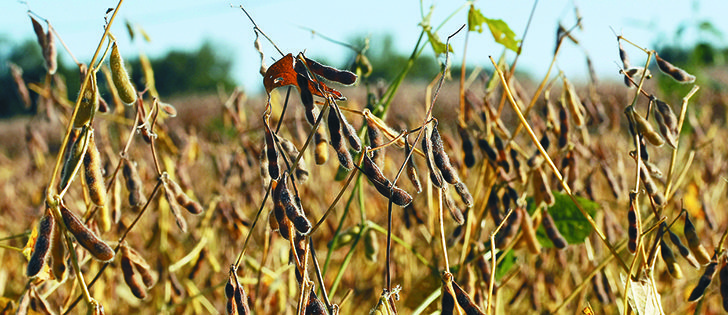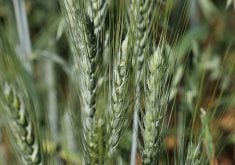MORDEN, Man. — Manitoba’s just a tiny bit player in the world soybean industry and the Prairies’ most dedicated marketer expects it to stay that way.
He thinks that’s great news for farmers sick of crashing markets.
“You can grow as many acres as you want, you can get the best yield possible, and it will never affect the market,” said Dale Heide of DelMar Commodities in an interview during the Manitoba Pulse Growers Association annual field day.
“We will never produce enough soybeans in Manitoba, Saskatchewan or Alberta to ever make a humongous influence on the world price.”
Read Also

Farm groups ask feds for export sales reporting
The Agricultural Producers Association of Saskatchewan and SaskCrops asks the federal government to create an Export Sales Reporting program.
Heide said Manitoba soybean growers are finding that grain companies and others are keen to buy their crops and that as acres expand, more marketers are coming to the Prairies.
“If we can produce over a million tonnes of soybeans in Manitoba, certainly it brings in a lot of the people interested in doing the marketing of it. That will hopefully bring some capacity at the ports and better logistics and prices for farmers,” said Heide.
“Everybody wants a piece of the elevations on the soybean crop and a million tonnes will definitely do that.”
The good news for soybeans is bad news for competing crops like edible beans and peas because those crops fight for the same spot in rotations.
Soybeans are popular with farmers because of their ease of production and nitrogen-fixing qualities, but the crop’s marketing advantages also offer it an edge.
Beans and other special crops are marketed through specialized channels and small players, while soybeans can be sold through any major grain company and through most facilities.
Farmers can use futures and options without much risk other than foreign exchange and basis contracts are commonplace. In the special crops area, those tools are often non-existent.
But the biggest advantage for a farmer who wants to focus on growing a crop and not playing the market speculation game is the insignificance of Western Canada to the world market, no matter how big the prairie soybean crop gets, Heide said.
“The demand (for soybeans) is not finite, like it is with a lot of special crops,” said Heide.
“If we produce a few hundred thousand tonnes extra, we’re not going to crash the market. We will never produce enough in Western Canada to make an impact.”
Indeed, special crops production has been slapped around by wild supply and demand shifts ever since they started to be grown.
If prairie farmers plant a lot of acres and get a good crop, they can flood small special crops markets and kill prices. That tends to kill acreage.
But then if production is bad on a low acreage, prices can shoot high, like they are now for edible beans.
Many Manitoba farmers are making the switch from older crops like flax, sunflowers and beans to crops like soybeans and corn, but Heide said some farmers in the past year haven’t begun acting like they’re in a mature, well-developed market.
Farmers were the beneficiaries of a massively inverted market, with nearby prices far higher than deferred prices, but near the end of the crop year many farmers still had crop to price.
“We were disappointed that more folks didn’t recognize the inverse that was in the market,” said Heide.
“It was unfortunate so many of the beans did move into the lower prices maybe sub-$13 per bushel versus $15-$16 (that was available early in the year.)”
















